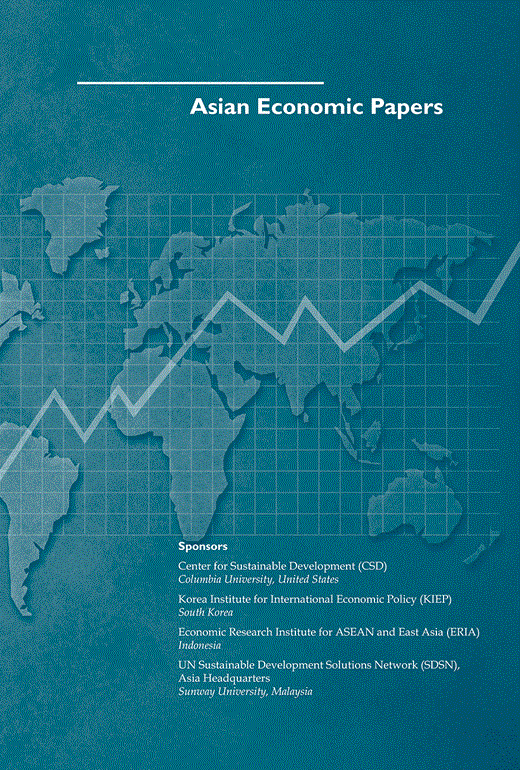Willingness-to-pay for a Haze Adaptation Program and a Haze Eradication Program in Singapore: The 2015 Transboundary Haze
IF 5.3
3区 经济学
Q1 ECONOMICS
引用次数: 0
Abstract
Abstract In Southeast Asia, the seasonal transboundary haze pollution stemming from slash-and-burn practices of traditional Indonesian farmers affects several countries in the region including Indonesia, Singapore, Malaysia, and Brunei. Despite both domestic and regional efforts that have been put in place to help fight against haze, Southeast Asian haze remains a long-term issue that recurs in a varying degree of intensity during every dry season in the region. While we remain optimistic that the problem will eventually be resolved, given that most of these fires are the result of human activity, solutions can be executed successfully only in the longer run. In the interim, one of Singapore's options is to adapt. A contingent valuation (CV) survey on 793 Singapore residents was conducted in Singapore between November and December 2017 to elicit their willingness-to-pay (WTP) for a haze adaptation program and a haze eradication program in Singapore. We use a double-bounded dichotomous choice CV survey design and the Kaplan-Meier-Turnbull method and the probit regression to infer the distribution of Singapore residents’ WTP for the two programs and find that they are willing to pay between S$ 46.46 and S$ 60.06 for a haze adaptation program that reduces the local impacts of haze and between S$ 51.66 and S$ 66.76 for a haze eradication program. These findings suggest that Singapore residents continue to value the government's effort to derive solutions to resolve the haze crisis that recurs intermittently.新加坡雾霾适应计划和根除计划的支付意愿:2015年跨境雾霾
在东南亚,印尼传统农民的刀耕火种造成的季节性跨境雾霾污染影响了该地区的几个国家,包括印度尼西亚、新加坡、马来西亚和文莱。尽管国内和地区都采取了措施来帮助对抗雾霾,但东南亚的雾霾仍然是一个长期问题,在该地区的每个旱季都会以不同程度的强度重复出现。虽然我们仍然乐观地认为问题最终会得到解决,但考虑到大多数火灾是人类活动的结果,解决方案只有从长远来看才能成功执行。在此期间,新加坡的选择之一是适应。2017年11月至12月在新加坡对793名新加坡居民进行了条件评估(CV)调查,以了解他们对新加坡雾霾适应计划和雾霾根除计划的支付意愿(WTP)。我们使用双界二分类选择CV调查设计和Kaplan-Meier-Turnbull方法和probit回归来推断新加坡居民对这两个方案的WTP分布,发现他们愿意为减少雾霾对当地影响的雾霾适应计划支付46.46 - 60.06新元,为雾霾消除计划支付51.66 - 66.76新元。这些发现表明,新加坡居民仍然重视政府为解决间歇性出现的雾霾危机而做出的努力。
本文章由计算机程序翻译,如有差异,请以英文原文为准。
求助全文
约1分钟内获得全文
求助全文
来源期刊

Asian Economic Papers
ECONOMICS-
CiteScore
7.50
自引率
0.00%
发文量
16
期刊介绍:
The journal Asian Economic Papers (AEP) is supported by several prominent institutions, including the Center for Sustainable Development at Columbia University in the United States. This shows that there is a strong emphasis on sustainable development within the journal's scope. Additionally, the Korea Institute for International Economic Policy in South Korea, the UN Sustainable Development Solutions Network (SDSN) in Malaysia, and the Economic Research Institute for ASEAN and East Asia in Indonesia also sponsor AEP. The articles published in AEP focus on conducting thorough and rigorous analyses of significant economic issues pertaining to specific Asian economies or the broader Asian region. The aim is to gain a deeper understanding of these issues and provide innovative solutions. By offering creative solutions to economic challenges, AEP contributes to the discourse and policymaking that impact the Asian economies and region as a whole.
 求助内容:
求助内容: 应助结果提醒方式:
应助结果提醒方式:


